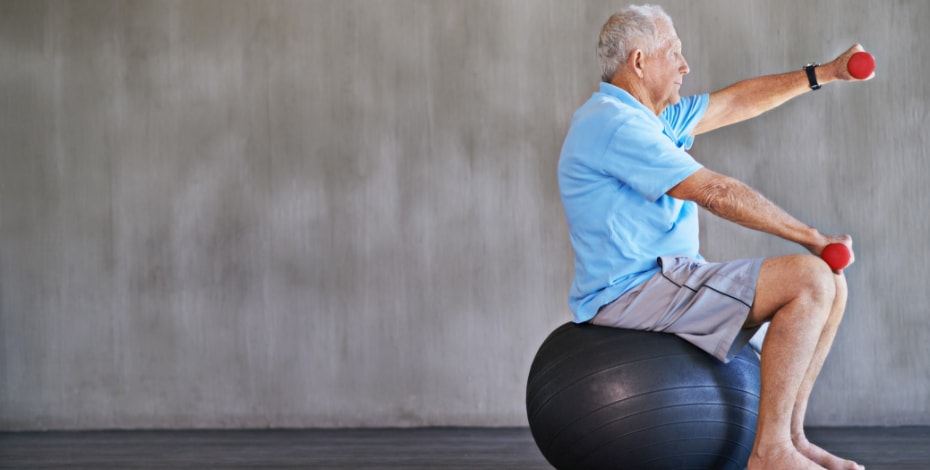
Promoting physical activity in older people

Juliana Oliveira discusses the randomised trial, which highlighted that combined physical activity and fall prevention intervention improved mobility-related goal attainment but not physical activity in older adults.
How common is poor mobility in people over 60 years of age?
Poor mobility is very common among older people. Around 30 per cent of people over 60 years of age have mobility limitations and report difficulties related to walking and climbing stairs. For older people with limitations in basic activities of daily living, about one-third have difficulty walking across a small room.
Is it difficult to get this age group to exercise and, if so, why?
Yes, population surveys show that the proportion of adults aged 65 years and older that actually achieve guideline-recommended levels of physical activity for maintaining health is 25 per cent. Changing behaviour to include regular physical activity is difficult for many people, and even when older people commence physical activity programs, the maintenance of participation often declines over time. There are many reasons for low physical activity adherence among older adults, including low motivation, pain, chronic conditions, lack of interest, and lack of access to suitable programs. Therefore, strategies that promote sustained physical activity participation in the long-term, as well as provide opportunities that target limitations and needs of older adults, are crucial.
What intervention did you use to try to promote physical activity and mobility in your trial?
In this trial, participants aged 60 years and older received a home visit, including a face-to-face health coaching session and a fall risk assessment. In this home visit, the participant and their health coach discussed and designed a tailored physical activity plan based on participant’s needs and interests. This physical activity plan included setting two mobility-related goals for six months.
Participants also received a pedometer (Fitbit) to provide feedback and motivate daily physical activity. They were encouraged to wear the Fitbit each day and to synchronise the device at least once per week for the whole six-month intervention period.
The home visit was followed by fortnightly telephone health coaching to identify barriers and facilitators to physical activity participation. The telephone coaching also provided education and assisted participants to reduce their risk of falling and support to achieve their physical activity goals.
It was a randomised trial, so what did the control group receive?
The control group received the ‘Staying Active and On Your Feet’ fall prevention booklet developed by the NSW Ministry of Health and they were advised to continue their usual activities.
What outcomes did you measure, just falls and physical activity?
No. We also included self-report measures of mobility-related goal attainment (Goal Attainment Scale), quality of life (European Quality of Life questionnaire), fear of falling (Falls Efficacy Scale International–short version), mood (Positive and Negative Affect Schedule), and mobility limitation (Late Life Function and Disability Instrument).
What did the combined intervention do for those who received it?
Our combined intervention was effective in promoting mobility goal attainment after six months of intervention. We did not find any significant impact on physical activity levels; however, this needs more investigation.
‘Around 30 per cent of people over 60 years of age have mobility limitations and report difficulties related to walking and climbing stairs.’
Juliana Oliveira
Was that benefit observed at six months maintained?
Although a higher proportion of people in the intervention group achieved their mobility-related goal at six months compared to the control group, this benefit was not maintained at 12 months.
Did the study provide a precise enough estimate to be sure that the intervention was ineffective for promoting physical activity?
No. The number of dropouts and missing data was a limitation of our study. This may have introduced some bias and appears to have made the study underpowered to detect an intervention impact on physical activity. Therefore, the effect of the intervention on physical activity needs further investigations in a larger trial.
Juliana Oliveira has recently finished her PhD at the Institute for Musculoskeletal Health, School of Public Health, University of Sydney. Her research career has focused on healthy ageing and physical activity promotion in older people.
© Copyright 2025 by Australian Physiotherapy Association. All rights reserved.





